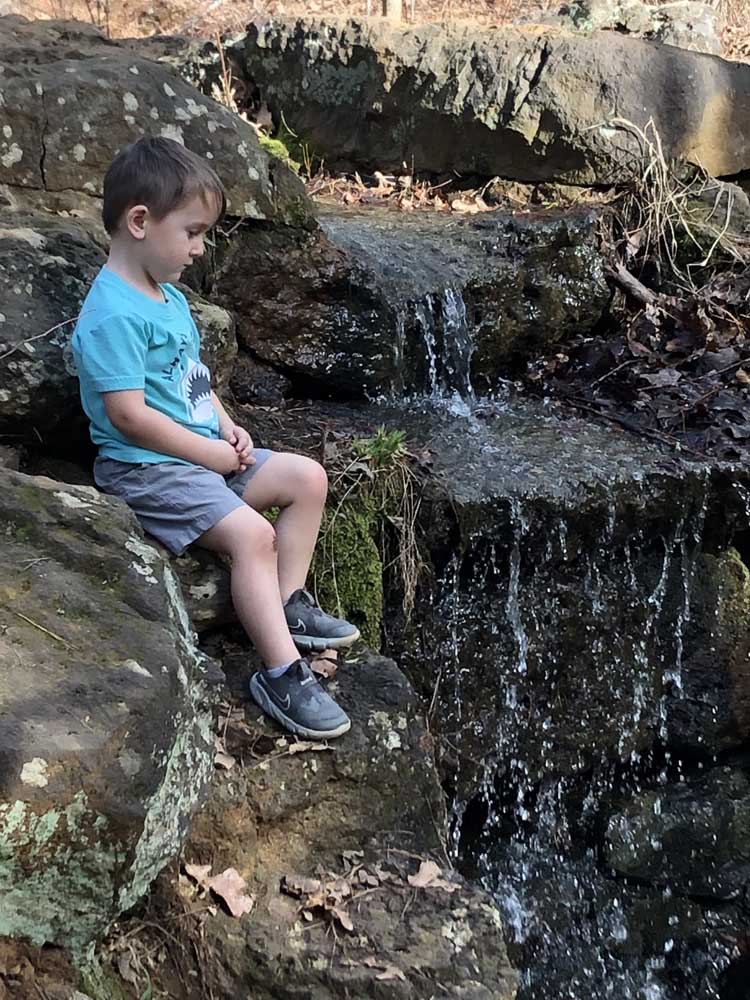The Great Outdoors: State parks are a great value and entry to natural Texas
Published 9:41 pm Friday, March 7, 2025

- Sometimes a visit to a Texas state park is just about slowing down and enjoying nature. Other times it is about fishing, swimming, hiking and other activities that the 88 parks, natural areas, historic sites and more have to offer. (Steve Knight/Tyler Morning Telegraph)
If I had any complaint about Texas’ state park system it would be there are not enough of them covering enough acreage.
There are currently 88 state parks, natural areas, historic sites, visitor centers, lodges and tramways covering more than 640,000 acres, but in a state where the population now hovers just below 32 million the need for outdoor recreation is greater than it has ever been.
It was not until the 1950s that Texas became an urban state, trailing much of the remainder of the country by 30 or so years. Late in the 20th century most Texans still had some connection to the land through grandparents and other relatives or maybe friends, and the need for recreational areas was not that strong. It is different now as today’s state parks annually draw more than 9 million total visitors, 2.6 million of which stay overnight.
I remember as a child taking family vacations at Lake Brownwood State Park. Even though we had plenty of access to farmland close to home, my parents would periodically take us to Central Texas to stay a few nights. Compared to today’s cabins it was rustic and almost primitive, but it was still an adventure that resulted in life-long memories.
Today’s park system has more than 8,000 overnight facilities at 81 facilities, with more on the way possibly this year if Palo Pinto Mountains State Park is completed. The overnight facilities include campsites, shelters and group areas, along with 243 cabins at 36 of the 81 locations. Cedar Hill State Park, just south of Dallas on Joe Pool Lake, has the most campsites with 401.
In comparison, Tyler State Park has 101 campsites, cabins and shelters.
What makes a state park visit special besides having nature just outside your cabin or tent, is the cost. Campsites within the system range from $4 to $75 depending on type, while cabins run from $40 to $200, a price that is much more affordable than a hotel.
And that is where the problem begins. For budget-conscious families, or anyone who enjoys nature, camping and outdoors in a clean and safe environment, state parks can fill up quickly. That is especially true starting with upcoming spring break vacations for schools around the state, and on most holiday weekends in the spring and summer.
According to Texas Parks and Wildlife Department’s numbers for 2024, the five most popular parks for overall visitation are Enchanted Rock State Natural Area, Garner, Palo Duro Canyon, Cedar Hill and McKinney Falls state parks.
The most popular with overnight visitors are Garner, Inks Lake, Cedar Hill, Galveston Island and Tyler, the smallest of the five.
Each park is different, depending on its location in the state, and they offer a variety of activities from fishing, hiking, swimming, bicycle and horseback trails. Some are full of activities that can keep you in the park all day, while others are gateways to adventures off-site, making the parks good options for stays when traversing the state.
To see which is the best fit, it is important to research the various parks (https://tpwd.texas.gov/state-parks/) before making reservations.
Thanks to some different funding initiatives in recent years that have put the system in the best financial state it has ever been, TPWD is looking toward expansion.
It has begun with the purchase of 630 acres adjacent to Enchanted Rock last year using funding from the Sporting Goods Sale Tax approved by Texas voters in 2019. The department then announced in January it would be doubling the size of the Llano County park with the purchase of an additional 3,073 adjacent acres with $43 million from the Centennial Parks Conservation Fund created in 2023, the 100-year anniversary of the state park system.
Using the same fund the agency has also purchased the 500-acre Lake Colorado City State Park in Mitchell County. The existing park was on land leased from Vistra Corp.
By purchasing the facility, the state prevented a fiasco like the loss of Fairfield Lake State Park last year.
The department has also purchased 2,020 acres in Burnet County for the creation of a new park to be known as Colorado Bend State Park. Before planning even begins that site could expand by an additional 1,100 acres as a willing seller recently approached the department about buying that land.
The two funding sources will be important to the state park system going forward. Long underfunded and unable to move quickly to secure land and forced into a massive backlog of repairs, issues that both appear in the past.


